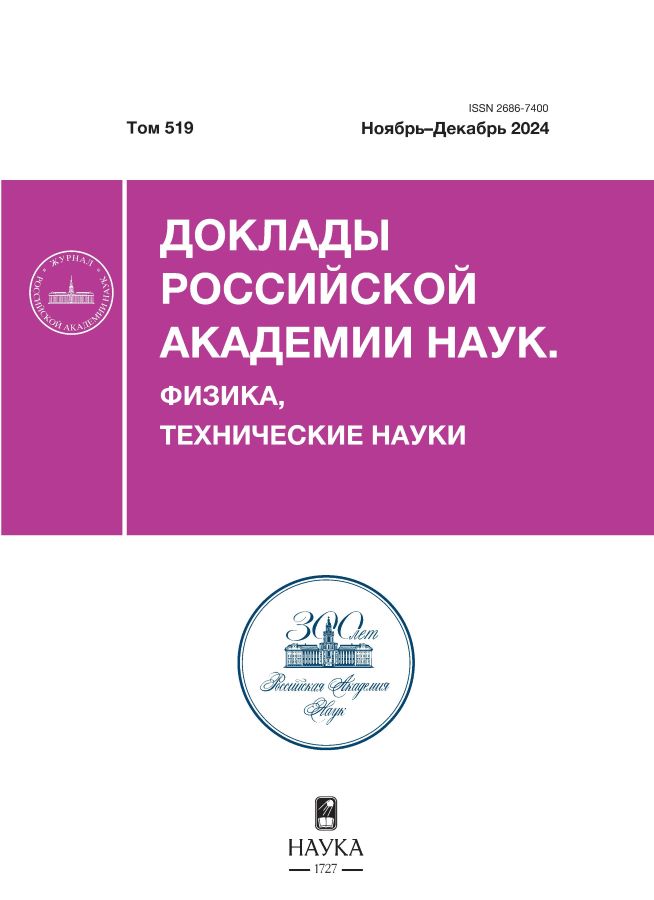EFFECT OF AMPLIFICATION OF SHOCK WAVES IN BULK MEDIA
- Autores: Akhmetov A.T1, Gimaltdinov I.K2, Mukhametzyanov A.F.2, Gizatullin R.F1
-
Afiliações:
- Mavlyutov Institute of Mechanics Ufa Federal Research Centre of the Russian Academy of Sciences
- Ufa State Petroleum Technological University
- Edição: Volume 519, Nº 1 (2024)
- Páginas: 41-46
- Seção: МЕХАНИКА
- URL: https://ruspoj.com/2686-7400/article/view/682470
- DOI: https://doi.org/10.31857/S2686740024060076
- EDN: https://elibrary.ru/HVZDMN
- ID: 682470
Citar
Texto integral
Resumo
It is well known that shock waves in sandy environments are absorbed, i.e. as they pass through the bulk medium, their amplitude decreases. In shock tubes, as a rule, the results of the impact of shock wave pulses on an object are studied, leading to a change in the shape and amplitude of the pulse that characterizes the medium. In a shock tube equipped with a section of bulk media, the wave is repeatedly reflected from the surfaces of the porous medium under study and the upper end of the tube. The amplitude and shape of the reflected wave differs insignificantly from the main pulse. At the same time, the amplitude of the re-reflected wave propagating in the sand immediately after exposure (13 ms) to the main pulse increases more than three times compared to the amplitude of the main pulse at this depth. Compared to its value at the sand surface, the amplitude in the sand thickness becomes almost twice as high. The maximum amplification of the amplitude of a reflected wave in a bulk medium increases with increasing layer through which the pulse passes to a certain depth, and then begins to decrease.
Palavras-chave
Sobre autores
A. Akhmetov
Mavlyutov Institute of Mechanics Ufa Federal Research Centre of the Russian Academy of Sciences
Email: alfir@anrb.ru
Ufa, Russia
I. Gimaltdinov
Ufa State Petroleum Technological University
Email: iljas_g@mail.ru
Ufa, Russia
A. Mukhametzyanov
Ufa State Petroleum Technological University
Email: tuarya@yandex.ru
Ufa, Russia
R. Gizatullin
Mavlyutov Institute of Mechanics Ufa Federal Research Centre of the Russian Academy of Sciences
Email: giz-renat@yandex.ru
Ufa, Russia
Bibliografia
- Ахметов А.Т., Гималтдинов И.К., Ситдикова Л.Ф., Азаматов М.Ш., Султангареев Ю.С., Хайретдинов Т.Д. О влиянии влагосодержания на распространение ударных волн слабой интенсивности в насыпных средах // Инженернофизический журнал. 2021.Т. 94. № 2. С. 418-423.
- Дучков А.Д., Дучков А.А., Дугаров Г.А., Дробчик А.Н. Скорости ультразвуковых волн в песчаных образцах, содержащих воду, лед или гидраты метана и тетрагидрофурана (лабораторные измерения) // ДАН. 2018. Т. 478. № 1. С. 94-99.
- Купер К.Э., Дробчик А.Н., Дучков А.А., Дугаров Г.А., Шарафутдинов М.Р. Исследование структуры газогидратных отложений методами рентгеновской томографии и акустического зондирования // Инженерно-физический журнал. 2022. Т. 95. № 7. С. 1815-1820.
- Дучков А.Д., Дугаров Г.А., Дучков А.А., Дробчик А.Н. Лабораторные исследования скорости и поглощения ультразвуковых волн в песчаных образцах, содержащих воду/лед, гидраты метана и тетрагидрофурана // Геология и геофизика. 2019. Т. 60. № 2. С. 230-242.
- Губайдуллин А.А., Болдырева О.Ю. Волны в пористой среде со слоем, содержащим газовый гидрат // Прикладная механика и техническая физика. 2020. Т. 61. № 4(362). С. 31-38.
- Губайдуллин А.А., Болдырева О.Ю., Дудко Д.Н. Скорость и поглощение линейных волн в пористых средах, насыщенных газом и его гидратом // Прикладная механика и техническая физика. 2022. Т. 63. № 4(374). С. 56-63.
- Губайдуллин А.А., Болдырева О.Ю., Дудко Д.Н. Методика численного моделирования волновых процессов в неоднородной гидратосодержащей пористой среде // Вестник Тюменского государственного университета. Физикоматематическое моделирование. Нефть, газ, энергетика. 2022. Т. 8. № 3(31). С. 59-71.
- Ахметова.Т., Азаматов М.А., Мухаметзянов А.Ф. Изменение структуры ударных волн в насыпных средах при переотражении // Многофазные системы. 2020. Т. 15. №. 1-2. С. 10.
- Ахметов А.Т., Гималтдинов И.К., Азаматов М.А., Мухаметзянов А.Ф., Богданов Д.Р. Зондирование водогазонасыщенных насыпных сред переотраженными волнами непосредственно после воздействия ударной волны // Письма в Журнал технической физики. 2022. Т. 48. № 1. С. 23-26.
- Зацепин А.Ф. Акустический контроль. В 2 ч. Ч. 1. Введение в физику акустического контроля. Екатеринбург: ГОУ ВПО УГТУ-УПИ, 2005. 88 с.
- Исакович М.А. Общая акустика. М.: Наука, 1973. 496 с.
Arquivos suplementares










